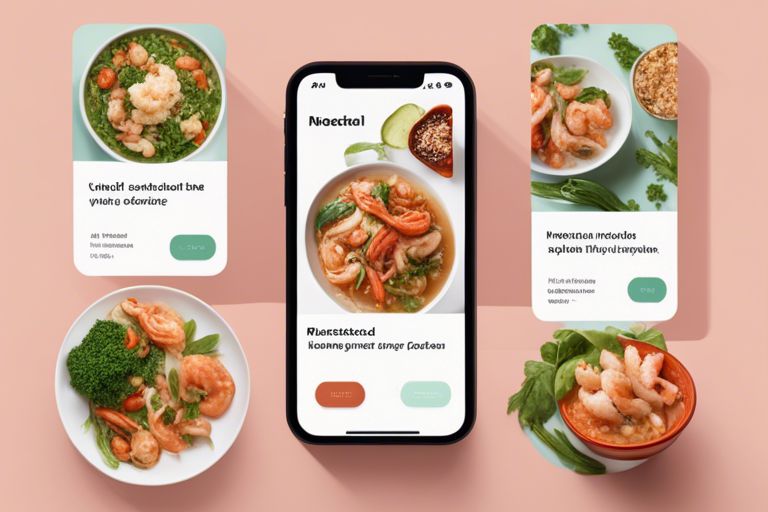Plant-based eating is not only beneficial for your health and the environment but also for the oceans. With the rise in popularity of plant-based diets, creating seafood dishes without harming marine life has never been easier. In this step-by-step guide, we will walk you through the process of preparing delicious plant-based seafood dishes at home. From selecting the right ingredients to mastering cooking techniques, you will soon be able to enjoy all your favorite seafood flavors in a sustainable and cruelty-free way. Join us on this culinary journey and discover the art of creating seafood-inspired dishes that are good for you and the planet.
Key Takeaways:
- Experiment with different plant-based seafood alternatives: Try a variety of plant-based alternatives such as jackfruit, hearts of palm, seaweed, or even marinated tofu to create delicious seafood dishes at home.
- Focus on seasoning and marinades: Use a mix of spices, herbs, and sauces to add flavor and mimic the taste of the sea in your plant-based seafood dishes.
- Get creative with your recipes: Don’t be afraid to think outside the box and experiment with new ingredients and techniques to elevate your plant-based seafood dishes and create unique flavors.
Understanding Plant-Based Seafood
Even if you’re not a fan of traditional seafood, you can still enjoy the flavors and textures of the ocean with plant-based seafood alternatives. These options are not only delicious but also environmentally friendly and cruelty-free.
Types of Plant-Based Seafood Alternatives
Seafood alternatives come in various forms, from plant-based fish fillets to vegan shrimp and algae-based caviar. These alternatives are created using ingredients such as seaweed, soy protein, and konjac powder. Recognizing the versatility of these options opens up a world of culinary possibilities.
| Plant-Based Fish Fillets | Vegan Shrimp |
| Seaweed-Wrapped Sushi Rolls | Algae-Based Caviar |
| Konjac Noodles | Plant-Based Tuna |
Factors Influencing the Quality of Plant-Based Seafood
Now, what sets high-quality plant-based seafood apart from the rest? Ingredients quality, texture, flavor enhancement, authenticity, and nutritional content are key factors that influence the overall quality of plant-based seafood products. The attention to detail in sourcing ingredients and replicating the taste and texture of traditional seafood plays a significant role in the success of these alternatives.
Understanding the nuances of plant-based seafood is crucial for creating delicious and satisfying dishes at home. While exploring these alternatives, keep in mind the importance of sustainable sourcing, experimenting with flavors, and being open to new culinary experiences. With the right knowledge and ingredients, you can enjoy the taste of the sea while supporting a healthier planet.
Preparing Your Kitchen
Essential Tools and Ingredients
Now, before you start creating delicious plant-based seafood dishes, make sure your kitchen is equipped with the necessary tools and ingredients. You will need a sharp chef’s knife, cutting board, vegetable peeler, blender or food processor, and a set of pots and pans. Stock up on staple ingredients like seaweed, chickpea flour, nutritional yeast, and various spices for flavor.
Tips for Storing Plant-Based Seafood
Now, when it comes to storing your plant-based seafood creations, it’s important to keep them fresh for as long as possible. Store your prepped ingredients in airtight containers in the refrigerator to maintain freshness. Avoid storing plant-based seafood dishes for more than 2-3 days as they can lose their texture and flavor. Knowing how to properly store your creations will ensure they taste their best when you’re ready to enjoy them.
- Use airtight containers to keep your plant-based seafood fresh.
- Avoid storing dishes for more than 2-3 days.
- Knowing how to store your creations will maintain their flavor and texture.
Step-by-Step Creation of Plant-Based Seafood Dishes
Many Vegan Seafood – The Blooming Platter of Vegan Recipes enthusiasts are turning to plant-based alternatives to create delicious and sustainable seafood dishes at home. If you’re looking to explore this culinary trend, it’s imperative to understand the key elements involved in successfully preparing these dishes. Let’s break down the process step-by-step to help you get started.
Selecting Your Base Ingredients
Clearly, the first step in creating plant-based seafood dishes is selecting your base ingredients. From seaweed and mushrooms to tofu and jackfruit, there are numerous options to choose from. Consider the flavor profile and texture you aim to achieve and select ingredients that align with your preferences.
Mastering Cooking Techniques
On your journey to creating plant-based seafood dishes, mastering cooking techniques is crucial. The key to success lies in understanding how to properly prepare and cook your chosen ingredients to replicate the taste and texture of traditional seafood. Whether you’re grilling, baking, or pan-searing, knowing the right methods can elevate your dishes to a whole new level.

Enhancing Your Plant-Based Seafood Experience
Flavor Pairing and Seasoning Tips
Once again, creating delicious plant-based seafood dishes relies heavily on the right flavor pairings and seasoning. Key elements like umami-rich ingredients such as seaweed or mushrooms can help create depth of flavor similar to seafood. Experimenting with citrus fruits like lemon or lime can add a refreshing zing to your dishes. Don’t forget to incorporate herbs like dill, tarragon, or parsley for a burst of freshness. Spices such as Old Bay seasoning or smoked paprika can lend a hint of smokiness to your plant-based seafood creations. Recognizing the balance of salty, sweet, sour, and savory flavors is imperative for a well-rounded dish.
Presentation and Garnishing Techniques
Even the most delicious plant-based seafood dish can be elevated with the right presentation and garnishing techniques. Pairing your dish with a colorful salad or a side of roasted vegetables can add texture and visual appeal. Garnishing with fresh herbs or a squeeze of citrus juice can bring out the flavors and make your dish more visually appealing. Presentation plays a crucial role in making a lasting impression on your guests or family members. Experiment with different plating techniques to showcase your plant-based seafood creations in the best light.
Pros and Cons of Plant-Based Seafood
| Pros | Cons |
| Low in saturated fats | Possible lack of Omega-3 fatty acids |
| Free from mercury and other toxins | May contain high levels of sodium |
| Sustainable and environmentally friendly | Some options may be highly processed |
| Can be a source of protein and fiber | Texture and flavor may not match traditional seafood |
Nutritional Comparison
| Nutrient | Plant-Based Seafood |
| Protein | Varies but can be a good source |
| Omega-3 Fatty Acids | May be lacking compared to actual seafood |
| Calories | Generally lower than real seafood |
An important factor to consider when choosing plant-based seafood over traditional options is the nutritional content. While plant-based alternatives can provide protein and fiber, they may not offer the same levels of imperative Omega-3 fatty acids found in fish. It’s imperative to ensure a well-rounded diet to make up for any potential nutritional gaps.
Environmental and Ethical Considerations
Even though plant-based seafood options are sustainable and do not contribute to issues like overfishing or habitat destruction, it’s crucial to be aware of the environmental impact of the ingredients used in these products. Some plant-based seafood alternatives may still involve processes that require high energy consumption or the use of chemicals that can harm the environment.
It is imperative to research and choose plant-based seafood options that are not only nutritionally beneficial but also produced in an environmentally friendly and ethical manner. Look for certifications or information on the sourcing and production methods used to make a more informed decision that aligns with your values and concerns.
Conclusion
To wrap up, creating plant-based seafood dishes at home is an enjoyable and sustainable way to explore new culinary horizons. By following this step-by-step guide, you can experiment with a variety of plant-based ingredients and flavor profiles to recreate your favorite seafood dishes without compromising taste or texture. Whether you are a seasoned chef or an amateur cook, these tips and tricks will help you elevate your plant-based cooking skills and impress your friends and family with delicious and environmentally-friendly seafood alternatives. So roll up your sleeves, grab your ingredients, and get ready to examine the world of plant-based seafood cooking!
FAQ
Q: Why should I consider creating plant-based seafood dishes at home?
A: Plant-based seafood dishes offer a sustainable and ethical alternative to traditional seafood. By choosing to cook these dishes at home, you can control the ingredients and ensure a healthy and balanced meal.
Q: What are some key ingredients to include in plant-based seafood dishes?
A: Key ingredients for plant-based seafood dishes include seaweed, tofu, hearts of palm, artichokes, and jackfruit. These ingredients can mimic the texture and flavor of seafood while providing vital nutrients.
Q: How can I enhance the flavor of plant-based seafood dishes?
A: To enhance the flavor of plant-based seafood dishes, use ingredients like nori flakes, Old Bay seasoning, lemon juice, capers, and seaweed. Experimenting with different seasonings and cooking techniques can elevate the taste of your dishes.


Pingback: Plant-Based Seafood - Healthy And Delicious Alternatives To Try - Veganism